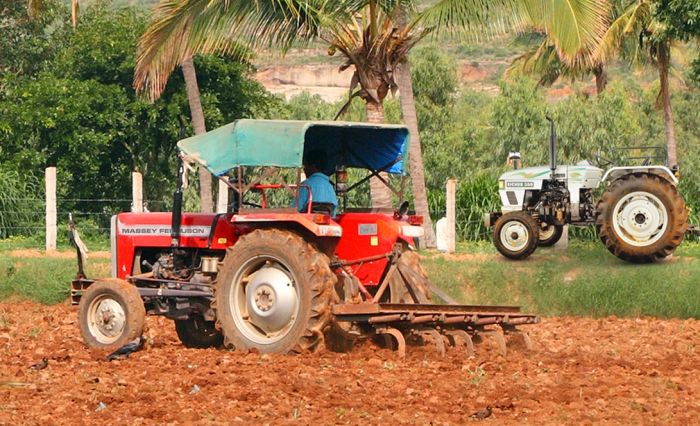News Highlight
The latest NCAER report, “Making India a Global Powerhouse in Farm Machinery Industry,” was released on February 7.
Key Takeaway
- The report examined the non-tractor farm machinery business from both the demand and supply sides, highlighting the sector’s problems.
NCAER Report on Farm Machinery Industry
- Overview
- NCAER examined the non-tractor farm machinery business from both the demand and supply sides.
- In their report, highlights the sector’s difficulties and recommend steps and reforms based on worldwide best practices.
- The NCAER is one of India’s leading think tanks for economic policy studies.
- Mahendra & Mahendra funded the study of the NCAER Report on The Farm Machinery Industry in India.
- The Report emphasises, among other things, that India requires a vision for the next 15 years to transform itself into a production and export powerhouse for non-tractor farm machinery.
- The research also offers policies and changes based on global best practices.
- A committee of policymakers will review it to find the best solutions for farm mechanisation.
Farm Machinery Industry
- Agriculture/Farm Mechanisation
- Mechanised agriculture uses agricultural machinery to automate agricultural work.
- Improved agricultural equipment and technology are critical inputs for increasing mechanisation in the agriculture sector.
- Significance
- It plays a vital role in optimising land use, water energy resources, manpower and other inputs like seeds, fertilisers, pesticides etc.
- It maximises the productivity of the available cultivable area.
- Hence, it makes agriculture more profitable and attractive for rural youth.
Major Challenges Related to the Farm Machinery Industry
- Limited Domestic Demand
- The needs of small and marginal Indian farmers are not met by what the organised farm machinery sector produces.
- Despite significant state-level variance, just 4.4% of farmer families in India had a tractor in 2018-19.
- In addition, 2.4% utilised a power tiller, and 5.3% owned one of the four machinery items.
- Lack of Adequate Power
- The turnaround time is dramatically reduced when cropping intensity increases.
- Adequate farm power is critical for timely farm activities that increase production and productivity while decreasing losses.
- However, India’s agricultural electricity availability in 2018-19 is 2.49 Kw/ha.
- It is significantly lower than in Korea (+7 kw/ha), Japan (+14kw/ha), and the United States (+7kw/ha).
- Dependence on Imports for Non-Tractor Machinery
- Tractors drive farm machinery exports, whereas non-tractor farm machinery imports drive agricultural machinery imports.
- Furthermore, trade is uneven, with China accounting for 53% of non-tractor farm machinery imports.
Steps Taken to Promote Farm Mechanisation
- Steps taken by Government
- Farm mechanisation is being promoted by the Ministry of Agriculture and Farmers Welfare through various schemes and programmes such as SMAM, CRM, and Drones.
- Training and testing by FMTTIs of agricultural machines, including tractors, power tillers, combine harvesters etc., is noteworthy.
- The colleges have done outstanding work in testing and training, providing a pool of over 2.3 lakh trained workers in farm mechanisation.
- Steps by Farm Industry
- The industry has also done outstanding work in increasing farm mechanisation in India, which is well acknowledged.
- The industry has demonstrated enormous ingenuity and zeal in bringing and developing appropriate technology, raising awareness, and lowering the cost of farm equipment for end consumers.

Way Forward
- The government can improve the efficacy of several programmes that promote farm efficiency.
- Suggestions from diverse stakeholders, such as farmers, topic specialists, research findings, and industries, can be considered when developing policies and initiatives.
Pic Courtesy:
Content Source: PIB



